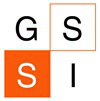Quantum turbulence
Carlo Barenghi
Newcastle University
Quantum mechanics constrains any rotational motion of quantum fluids (e.g. superfluid helium and atomic Bose-Einstein condensates) to vortex lines of quantised circulation which represent topological defects of the order parameter. Turbulence in quantum fluids (or "quantum turbulence") therefore takes the form of a disordered tangle of vortex lines. Recent experimental and theoretical work has highlighted important analogies between quantum turbulence and turbulence in ordinary (classical) fluids, possibly shedding some light into the nature of turbulence itself. However regimes have been identifed in which quantum turbulence and classical turbulence differ sharply, opening issues about the cross-over between these behaviours. The aim of this lecture is to introduce and review the new challenges which emerge from these results at the interface of classical and quantum physics.
Quantum fluids of light: from superfluid light towards fractional quantum Hall liquids
Iacopo Carusotto
INO-CNR BEC Center & University of Trento
In this talk I will review the recent advances in the theoretical and experimental study of quantum fluids of light, that is assemblies of photons confined in suitable material platforms that display collective many-body effects as a result of the interactions mediated by the optical nonlinearity of the underlying material. I will start with a survey of early results on Bose-Einstein condensation and superfluid hydrodynamical effects with an emphasis on those non-equilibrium features that are characteristic of these driven-dissipative optical systems. Open questions related to the nature of the phase transition towards a superfluid state will be addressed. I will then move towards the on-going challenge of using quantum fluids of light to generate strongly correlated states of matter, such as Mott insulators or fractional quantum Hall fluids in a completely new non-equilibrium framework. The main challenges and the potential of optical systems in this direction will be highlighted.
Semi and Quasi-Classical approximation of ground state energy for bosonic systems
Marco Falconi
University of Tübingen
In this talk I would like to explain how semiclassical methods can be used to provide effective characterizations of the ground state energy for interacting quantum systems, consisting of many particles possibly interacting with bosonic fields. For such systems, the leading order of the energy can be described in terms of a "classical" variational problem, involving either an effective energy functional or the bottom of the spectrum of a suitable effective operator. Based on joint collaborations with Z. Ammari, M. Correggi, and M. Olivieri.
On some coupled PDE-ODE systems in fluid dynamics
Evelyne Miot-Desecures
CNRS & Université Grenoble-Alpes
In this talk we will present existence and uniqueness issues for two coupled PDE-ODE systems. The common frame is that they arise as the asymptotical dynamics of a regular, incompressible 2D flow interacting with a point with highly concentrated vorticity (point vortex), or a rigid body contracting to a moving massive particle. This is joint work with Christophe Lacave.
Bogoliubov Theory at Positive Temperatures
Marcin Napiórkowski
University of Warsaw
I shall discuss the homogeneous Bose gas at positive temperatures within Bogoliubov theory. The theory arises by restricting the Hilbert space to quasi-free states. I will introduce the free energy functional and discuss the existence of equilibrium states, phase diagram and critical temperature. This is joint work with Robin Reuvers and Jan Philip Solovej.
Writhe and Twist Helicity of Quantum Vortex Systems
Renzo Ricca
University of Milano-Bicocca
Here we show how kinetic helicity, a fundamental invariant of classical fluid dynamics, can be equally defined for quantum vortices under the Gross-Pitaevskii equation and we discuss how the integral definition of helicity admits decomposition in terms of writhe and twist contributions [1]. We use this decomposition to study the evolution of writhe and twist under direct numerical simulation of the GPE evolution of a Hopf link and the following cascade process produced by a series of reconnections [2]. Since for quantum systems helicity remains always zero, and under anti-parallel reconnection writhe remains conserved across each reconnection event [3], twist must always balance changes in writhe. We show how this naturally leads to a continuous reduction of writhe and twist (of opposite sign) towards small-scale unknotted, unlinked planar rings.
[1] Moffatt, H.K. & Ricca, R.L. (1992) Helicity and the Clugreanu invariant. Proc. R. Soc. A 439, 411-429
[2] Zuccher, S. & Ricca, R.L. (2017) Relaxation of twist helicity in the cascade process of linked quantum vortices. Phys. Rev. E 95, 053109
[3] Laing, C.E., Ricca, R.L. & Sumners, DeW.L. (2015) Conservation of writhe helicity under anti-parallel reconnection. Nature Sci. Rep. 5, 9224
Gibbs measures of nonlinear Schrödinger equations as limits of many-body
quantum states in dimension d ≤ 3
Vedran Sohinger
University of Warwick
Gibbs measures of nonlinear Schrödinger equations are a fundamental object used to study low-regularity solutions with random initial data. In the dispersive PDE community, this point of view was pioneered by Bourgain in the 1990s. We prove that Gibbs measures of nonlinear Schrödinger equations arise as high-temperature limits of appropriately modified thermal states in many-body quantum mechanics. We consider bounded defocusing interaction potentials and work either on the d-dimensional torus or on Rd with a confining potential. The analogous problem for d=1 and in higher dimensions with smooth non translation-invariant interactions was previously studied by Lewin, Nam, and Rougerie by means of variational techniques.

